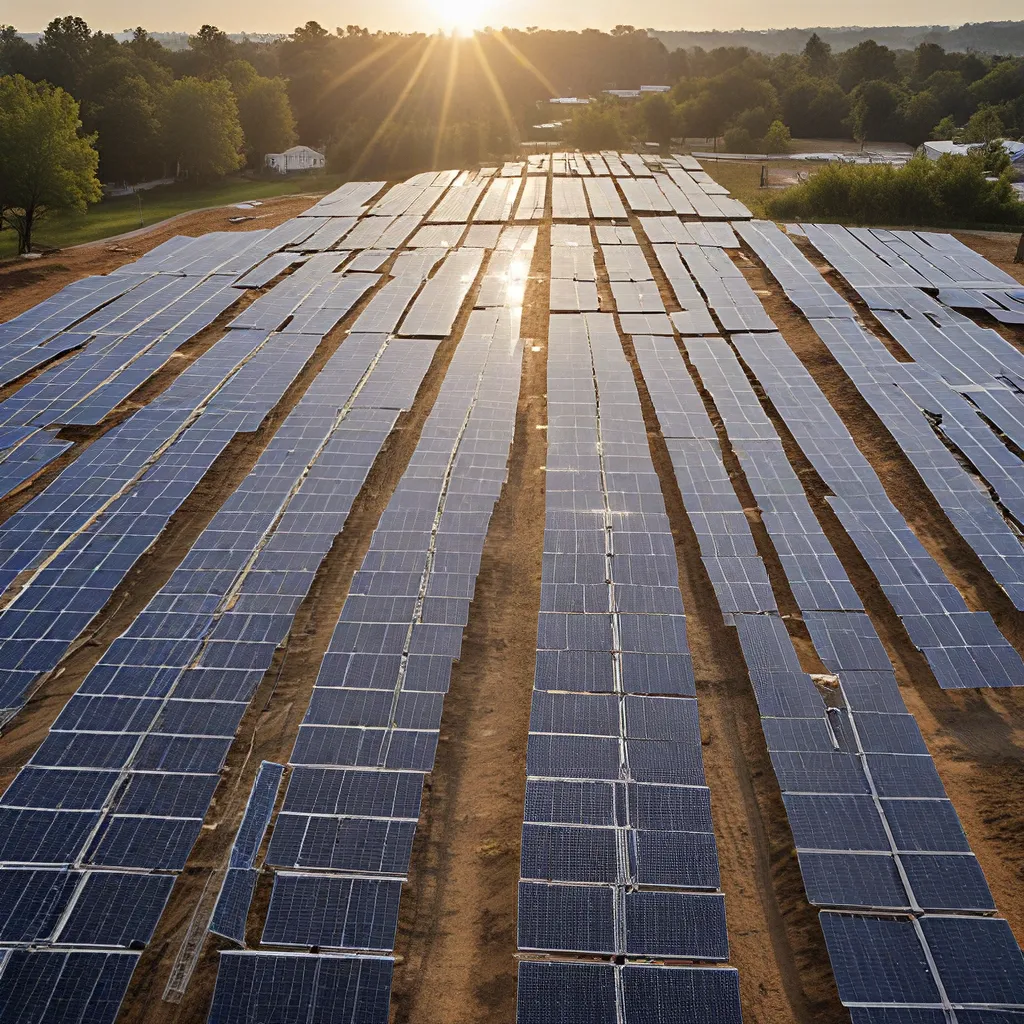
The Sun’s Playground: Unlocking the Power of Distributed Solar
Have you ever stood outside on a sunny day, admiring the warm glow of the sun and wondering, “How can I harness this power for my own use?” Well, my friend, you’re not alone. More and more people are turning to the sun as a clean, renewable energy source, and the integration of distributed solar generation is revolutionizing the way we power our homes, businesses, and communities.
Distributed solar generation is the process of generating solar power through small-scale, decentralized systems, often located on individual properties or within local communities. This approach stands in contrast to the traditional model of large, centralized power plants that feed electricity into the grid. By tapping into the abundant and free energy of the sun, distributed solar generation offers a way to reduce our reliance on fossil fuels, lower our carbon footprint, and take control of our energy future.
But the integration of distributed solar generation isn’t just about the environmental benefits. It’s also about empowering individuals and communities to become active participants in the energy ecosystem. Imagine a world where your roof isn’t just a shelter from the elements, but a canvas for harnessing the sun’s power and contributing to the local energy grid. That’s the kind of future we’re working towards, and it’s one that’s full of exciting possibilities.
The Solar Revolution: From Rooftops to Resilient Grids
As the adoption of distributed solar generation continues to grow, we’re witnessing a paradigm shift in the way we think about energy. Gone are the days when we were passive consumers, relying on a centralized grid that was vulnerable to outages and inefficiencies. Now, we have the opportunity to become energy producers, generating our own electricity and even sharing it with our neighbors.
One of the key benefits of distributed solar generation is its ability to improve the resilience of the electrical grid. By having multiple, dispersed sources of power generation, the grid becomes less susceptible to large-scale disruptions caused by natural disasters or other events. Instead of a single point of failure, the grid becomes a dynamic network of interconnected nodes, each contributing to the overall stability and reliability of the system.
Moreover, the integration of distributed solar generation can help alleviate the strain on the traditional grid, reducing the need for costly infrastructure upgrades and grid maintenance. As more homes and businesses adopt solar power, the demand for electricity from the centralized grid decreases, allowing utilities to focus on modernizing and optimizing the existing infrastructure.
But the impact of distributed solar generation extends beyond the grid itself. It’s also transforming the way we think about our energy consumption and our role in the larger energy ecosystem. By becoming energy prosumers – both producers and consumers of electricity – we’re taking an active stance in shaping our energy future and contributing to the sustainability of our communities.
The Dance of Supply and Demand: Balancing the Grid with Distributed Solar
As the integration of distributed solar generation continues to grow, one of the key challenges is balancing the supply and demand of electricity on the grid. After all, the sun doesn’t always shine, and our energy needs don’t always align with the sun’s schedule.
This is where the concept of a transactive energy marketplace (TEM) comes into play. A TEM is a decentralized platform that allows energy prosumers to engage in peer-to-peer energy trading, buying and selling electricity as needed. By creating a dynamic, real-time marketplace for energy, the TEM helps to balance the fluctuating supply and demand, ensuring that the grid remains stable and efficient.
Imagine a scenario where your neighbor’s solar panels are generating more electricity than they need, while your home is running low on power. With a TEM, you can seamlessly purchase that excess energy from your neighbor, without the need for a centralized utility to facilitate the transaction. This not only helps to balance the grid, but it also creates new revenue streams for energy prosumers and fosters a sense of community-driven energy management.
But the integration of distributed solar generation and the TEM isn’t just about the technical aspects. It’s also about empowering individuals and communities to take control of their energy future. By becoming active participants in the energy ecosystem, we’re not only reducing our carbon footprint, but we’re also building resilient, self-reliant communities that are better equipped to weather the storms of an uncertain energy landscape.
The Future is Bright: Solarizing the Grid, One Rooftop at a Time
As we look to the future, the integration of distributed solar generation is poised to play a pivotal role in the transition to a more sustainable and equitable energy system. The possibilities are endless, from community-driven energy projects that bring neighbors together, to innovative technologies that seamlessly integrate solar power into our homes and businesses.
At Plug & Save Energy Products, we’re excited to be part of this solar revolution. Our mission is to empower individuals and communities to harness the power of the sun and take control of their energy future. Whether it’s through cutting-edge solar panels, smart home devices, or educational resources, we’re here to support you on your journey towards a more sustainable and resilient energy future.
So, what are you waiting for? The sun is shining, the grid is ready, and the future is bright. Let’s solarize the grid, one rooftop at a time, and create a better tomorrow for ourselves and generations to come.